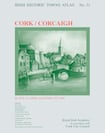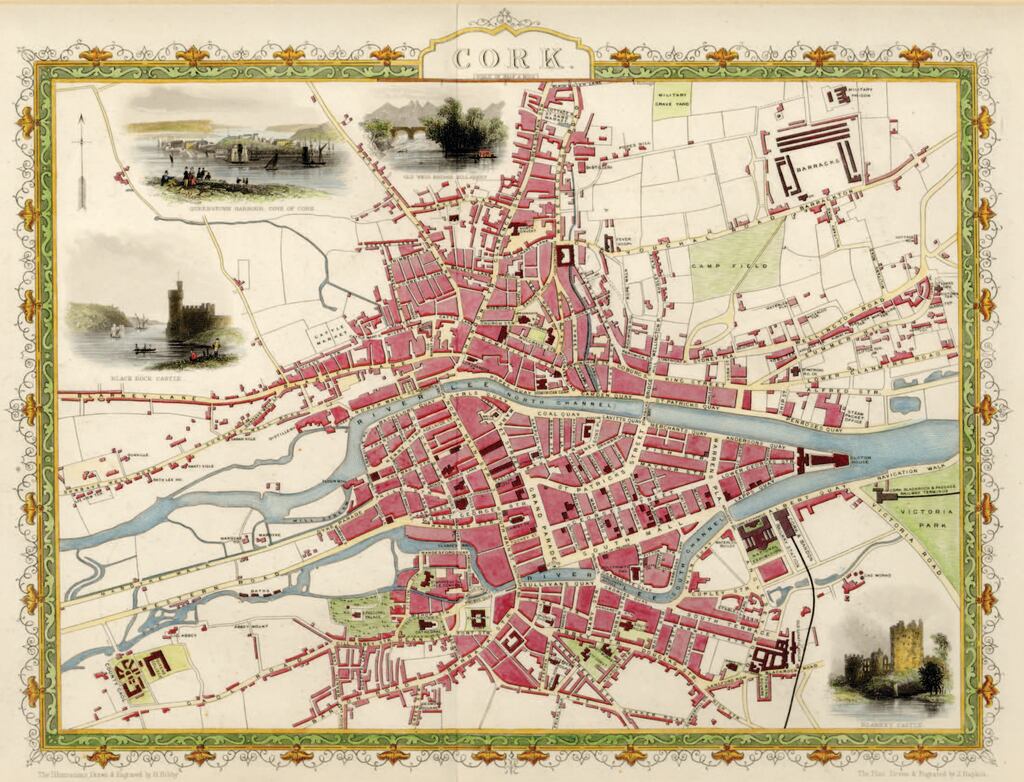
‘The people of Cork, whom we may call Corkonians or Corkagians, regard their city as special. They are right.’ Thus the authors and editors of this astonishing Royal Irish Academy folder of documents introduce their topographical subject matter with a confident boldness that matches the task at hand.
The city has coped with many tribulations, not least of which was the instruction of 1856 that public clocks in Cork had to comply with Dublin time.
Geographically Cork is something of a miracle. Much of this old city lies within normal springtide range, its situation hardly differing from the 420 acres of “tideways” noted in the Parliamentary Gazette of 1846. The flood-risk maps of Cork City might have been composed on a very horrible night by the author Stephen King: “For urban reclamation between two channels of a powerful river on such a scale, there is no parallel anywhere in Europe. Not surprisingly eighteenth-century Cork was compared by visitors with Dutch cities in terms of its location and structure.”
The brilliantly written introductory essay, quoted above, is only one important element of this essential Royal Irish Academy project. But the stars of the show are the maps. As I unfold them in my upstairs room in Montenotte I am also watching giant earth-moving equipment at work across the river in the Cork Docklands, raising the ground-level above winter high-water mark in a fabulous waterside where more than a thousand new apartments are planned.
The New Nuclear Age by Ankit Panda: Could ‘growing loose talk’ lead to the ultimate disaster?
Author Seán Farrell: ‘Dermot Bolger said there was a whiff of silage off my novel. I think that was a compliment’
Beartooth by Callan Wink: Spare and remarkable
Books in brief: The Princess of 72nd Street; The World Administered by Irishmen; The Lamb
Dealing with Cork as a living city requires such immense, trenchant boldness. From the evidence of these maps we can see the boldness of the old city corporation that culverted the winding quaysides to create Patrick Street and the boldness of the Wide Street Commissioners who cut across the medieval orientation of Cork City to create Washington Street on an east-west axis.
[ Is Cork still the best place to survive the apocalypse?Opens in new window ]
But the first loyalty of our Royal Irish Academy scholars is to the older city: “the built fabric of central Cork, commensurate with our study area, ought to be regarded and be treated as a national treasure. Examples of every major architectural style for this part of Europe are to be found there, some of them of world-class standard. All are within walking distance of Daunt’s Square.” The maps, therefore, are the making of this project, their glorious images reproduced here in A3 and broadsheet: the TCD “Town of Cork” map of 1601, the Pacata Hibernia map of 1633, the rare John Rapkin map of 1851, and the superb Ordnance Survey 1:5000 scale map of c.2021.
Supplementing the maps is a folder of the most famous topographical paintings and prints of the city, including a full-colour reproduction of the much-loved John Butts of 1750. This, then, is a serious publication of immense value to architects, planners and brave builders; but also a treasure-trove of luminous images for the general reader.
Thomas McCarthy is a Waterford-born poet. He studied archaeology and geography at UCC in the 1970s.














